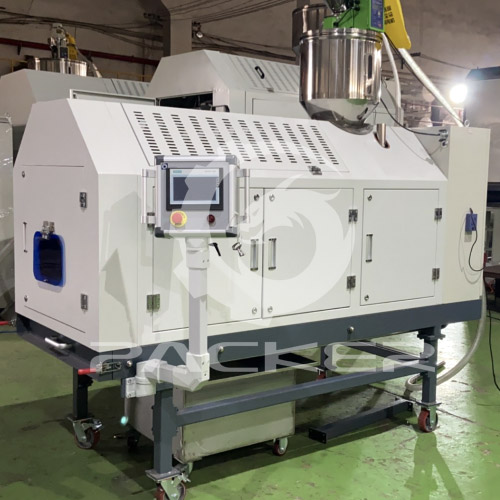Addressing Common Challenges in Plastic Master Batch Pellet Dryer Operations
2024-03-16
Plastic master batch pellet dryers are indispensable tools in the plastics manufacturing industry, playing a critical role in ensuring the quality and performance of final products. However, like any piece of equipment, they are not without their challenges. Understanding and addressing these common issues is essential for maintaining efficient operations and achieving optimal results. Let's explore some of the typical challenges faced when using a plastic master batch pellet dryer and effective strategies for overcoming them.
1. Uneven Drying:
Issue: Inconsistent moisture removal can lead to variations in the moisture content of pellets, resulting in quality issues such as surface defects or mechanical weaknesses in the final product.
Solution: Optimize drying parameters such as temperature, airflow, and residence time to ensure uniform drying across all pellets. Regularly inspect and clean dryer components to prevent blockages or airflow disruptions that could contribute to uneven drying.
2. Overheating:
Issue: Excessive heat can cause thermal degradation of plastic pellets, compromising their mechanical properties and increasing the risk of defects in the final product.
Solution: Monitor and control drying temperatures closely, ensuring they remain within the recommended range for the specific plastic material being processed. Implement temperature sensors and automatic cutoff mechanisms to prevent overheating and mitigate risks of thermal damage.
3. Material Contamination:
Issue: Cross-contamination of plastic materials or additives can occur if proper cleaning and maintenance procedures are not followed, leading to quality issues and production delays.
Solution: Establish rigorous cleaning protocols for the dryer system, including regular inspection and maintenance of all components. Implement color and material changeover procedures to minimize the risk of contamination during production runs.
4. Energy Consumption:
Issue: High energy consumption can lead to increased operating costs and environmental impact, particularly in larger-scale manufacturing operations.
Solution: Invest in energy-efficient dryer models equipped with advanced heating and airflow systems. Optimize drying cycles and scheduling to minimize idle time and maximize energy utilization. Consider implementing heat recovery systems to capture and reuse waste heat generated during drying processes.
5. Equipment Maintenance:
Issue: Neglecting routine maintenance can result in equipment malfunctions, breakdowns, and unplanned downtime, disrupting production schedules and increasing costs.
Solution: Develop a comprehensive maintenance schedule that includes regular inspection, cleaning, and lubrication of dryer components. Train operators to recognize early signs of wear or damage and address them promptly to prevent more significant issues from arising.
6. Dust and Particulate Buildup:
Issue: Accumulation of dust and particulate matter within the dryer chamber can impair airflow, reduce drying efficiency, and pose fire hazards.
Solution: Implement effective dust control measures, such as installing dust collection systems and regularly cleaning dryer components. Conduct thorough inspections and cleanings to remove any buildup of dust or debris that could impede airflow or create safety hazards.
Conclusion:
In conclusion, while plastic master batch pellet dryers are invaluable assets in plastics manufacturing, they are not immune to challenges. By addressing common issues such as uneven drying, overheating, material contamination, energy consumption, equipment maintenance, and dust buildup, manufacturers can optimize dryer performance, enhance product quality, and maintain efficient operations. Through proactive monitoring, diligent maintenance, and continuous improvement initiatives, these challenges can be effectively managed to ensure smooth and successful plastic drying operations.



